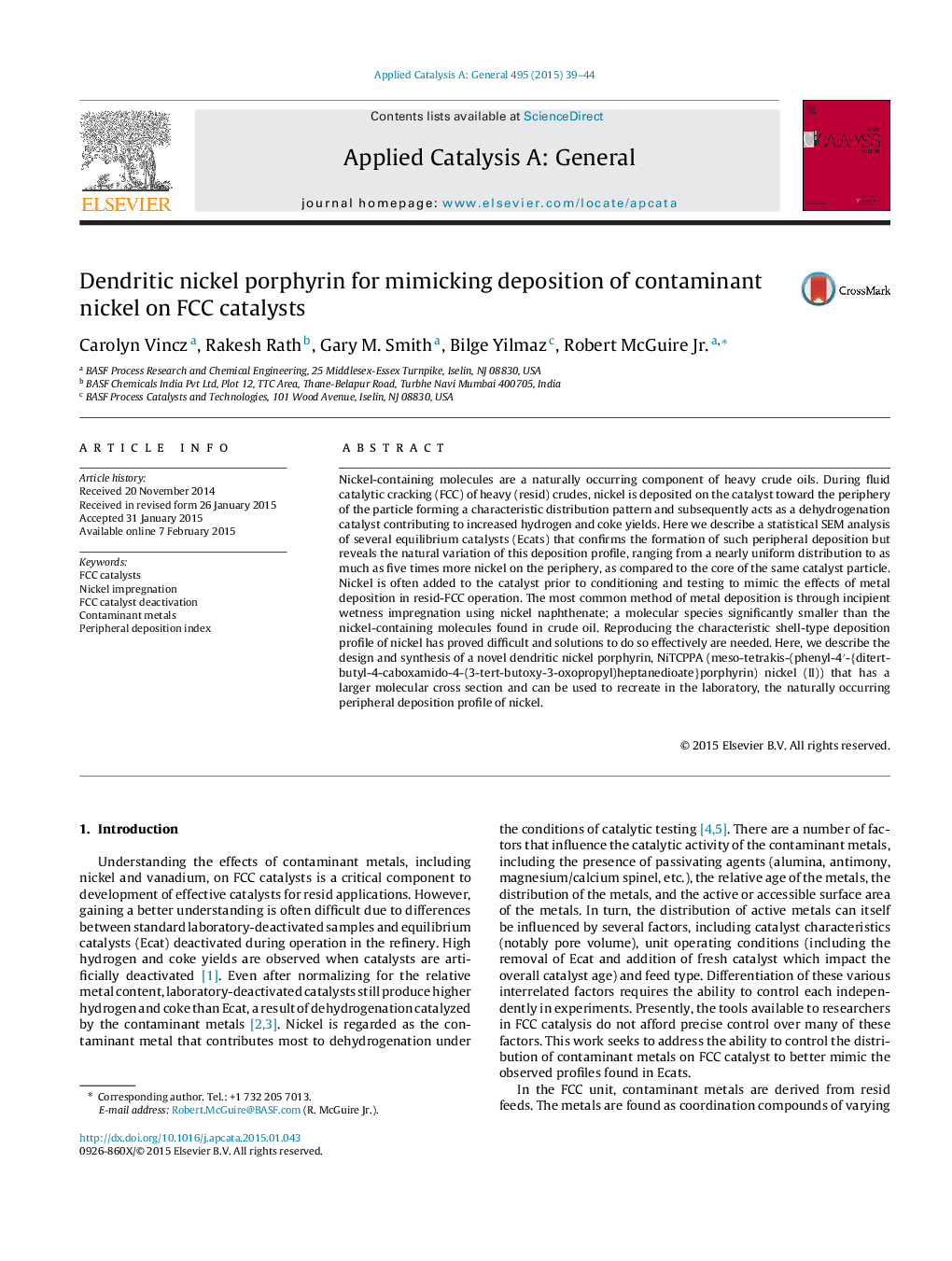| Article ID | Journal | Published Year | Pages | File Type |
|---|---|---|---|---|
| 39299 | Applied Catalysis A: General | 2015 | 6 Pages |
•A statistical analysis method of nickel deposition on FCC Ecat was developed.•Peripheral deposition index (PDI) is defined revealing a wide range in deposition.•A novel nickel-containing dendritic porphyrin has been designed and synthesized.•The new molecule was used to deposit nickel on FCC catalyst.•The deposition of nickel with the new molecule closely matches that of Ecat.
Nickel-containing molecules are a naturally occurring component of heavy crude oils. During fluid catalytic cracking (FCC) of heavy (resid) crudes, nickel is deposited on the catalyst toward the periphery of the particle forming a characteristic distribution pattern and subsequently acts as a dehydrogenation catalyst contributing to increased hydrogen and coke yields. Here we describe a statistical SEM analysis of several equilibrium catalysts (Ecats) that confirms the formation of such peripheral deposition but reveals the natural variation of this deposition profile, ranging from a nearly uniform distribution to as much as five times more nickel on the periphery, as compared to the core of the same catalyst particle. Nickel is often added to the catalyst prior to conditioning and testing to mimic the effects of metal deposition in resid-FCC operation. The most common method of metal deposition is through incipient wetness impregnation using nickel naphthenate; a molecular species significantly smaller than the nickel-containing molecules found in crude oil. Reproducing the characteristic shell-type deposition profile of nickel has proved difficult and solutions to do so effectively are needed. Here, we describe the design and synthesis of a novel dendritic nickel porphyrin, NiTCPPA (meso-tetrakis-(phenyl-4′-{ditert-butyl-4-caboxamido-4-(3-tert-butoxy-3-oxopropyl)heptanedioate}porphyrin) nickel (II)) that has a larger molecular cross section and can be used to recreate in the laboratory, the naturally occurring peripheral deposition profile of nickel.
Graphical abstractFigure optionsDownload full-size imageDownload high-quality image (113 K)Download as PowerPoint slide
